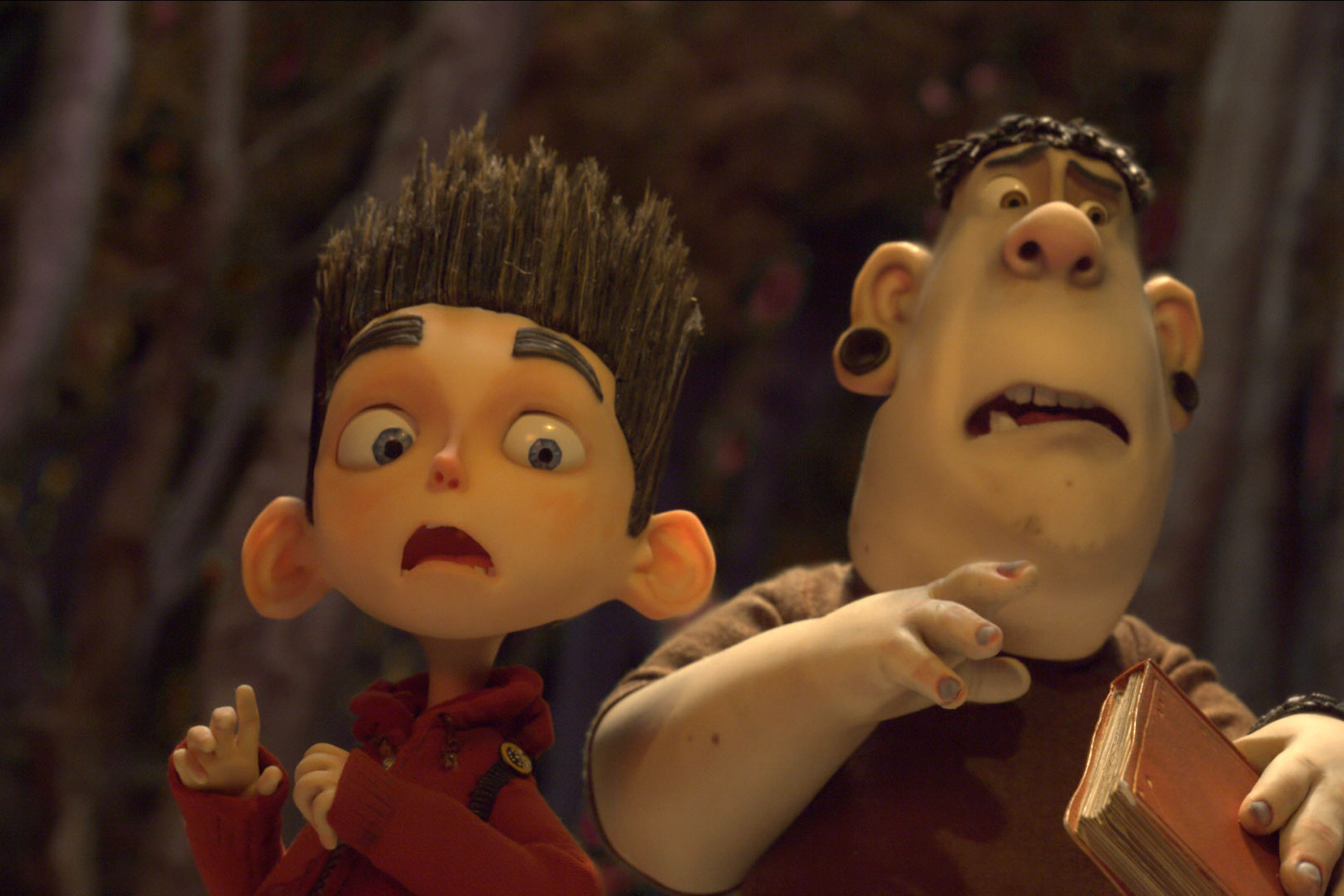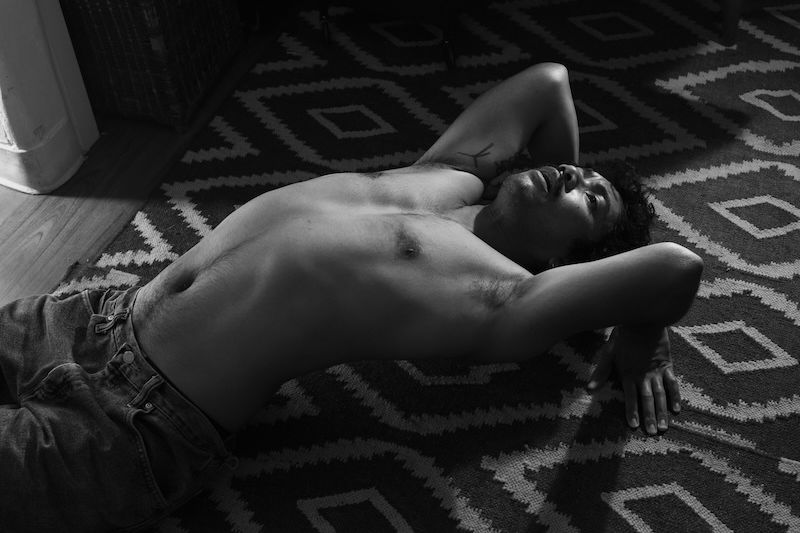Mike Vos’ New Exhibit Envisions A World Without Humans
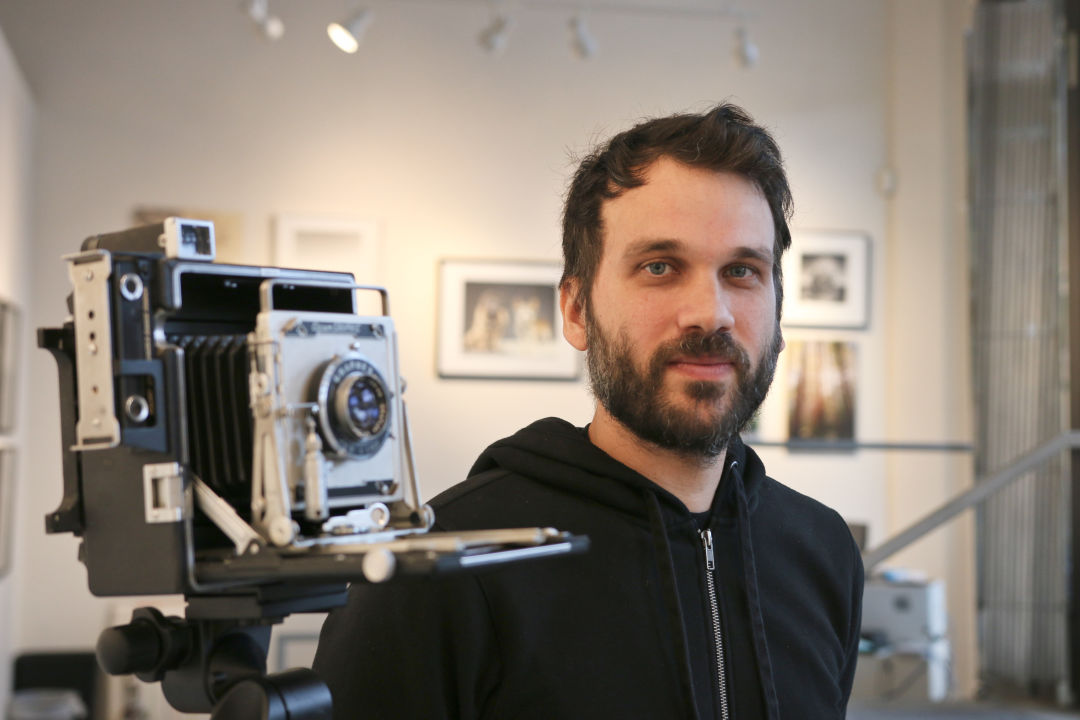
Mike Vos stands in Pushdot Studio next to his 1916 4x5 Graflex press camera. His new exhibit, Someday This Will All Be Gone, uses double-exposed film to juxtapose crumbling industrialized civilization with flourishing nature.
Image: Gabriel Granillo
"Someday this will all be gone." Not only is this the title of Mike Vos’ new exhibit, opening this Friday at Pushdot Studio in inner Southeast Portland—it’s also been a mantra of sorts for the 33-year-old local photographer. "This" being us: humans, industrialization. And he recites the mantra to himself anytime he hears about a human-caused ecological disaster.
Just last year there was the Keystone Pipeline oil spill and the Amazon Rainforest fires. But Vos remembers the Eagle Creek Fire in 2017, how guilty and sad he and his fellow Oregonians felt.
“I think seeing something that’s that captivating and beautiful—that wildlife and the biodiversity out there—being destroyed is really devastating for people, and it becomes really visceral,” says Vos. “For a lot of people, nature is kind of an abstraction. It’s this concept they read about in National Geographic or see on TV, it’s not something they experience one on one.”
So his mantra, morose though it may feel, is hopeful, because a world without humans is a world that might be able to rebuild itself.
“Someday everything is going to be gone, humans will be gone, and nature will have a chance to regrow without human intervention. It will regrow and flourish and come back,” says Vos. “That brings me some kind of solace and hope.”
Someday This Will All Be Gone, ultimately, is a narrative of redemption and reclamation.
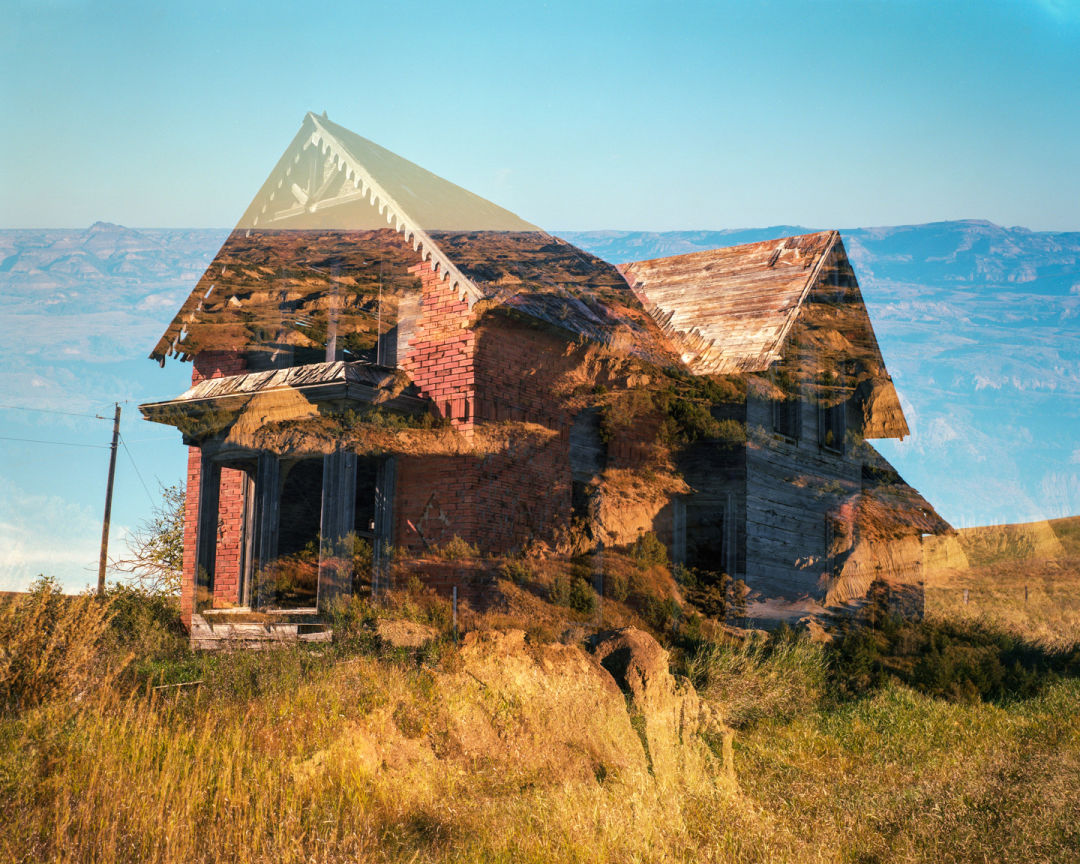
"At the Edge of the Badlands (North Dakota)"
Image: Courtesy Mike Vos
Vos captured this series entirely on a 1916 Graflex 4x5 camera, utilizing double-exposure techniques to juxtapose abandoned buildings, homes, and mines with flourishing, dynamic landscapes. Part of why Vos enjoys working with the Graflex is because the camera itself was built for journalists, and it operates without a power source.
“Theoretically, this camera [could] still operate if civilization no longer existed,” he says.
Vos is less inspired by visual artists and more by his literary idols, namely Cormac McCarthy, Stephen King, and H.P. Lovecraft. Their work, Vos says, as well as helping him create a shared universe within his photographic series’—this is his fourth solo exhibition, and first to have been funded by the Regional Arts & Culture Council—adds a subtle horror to his photographs, a sort of magical realism where something feels off.
In Someday This Will All Be Gone, we’re shown doorways and hallways and staircases and toys and tools—but no people. A nuclear plant morphs into tree, a window opens to a canyon. It’s a beautiful and unsettling image of a world after us. It’s not dystopic, necessarily. It’s inevitable.
“We’re living in a finite world with finite resources, eventually it’s going to have to change. I don’t know what that change will look like, I doubt that it will happen during our lifetime, but eventually things will have to change. Human beings exist on such a tiny blip on the timeline of the history of the world, and industrial civilizations are even a smaller fraction of that,” Vos says. “I feel that a lot of visual art is anthropocentric, it’s very human centered, so I want to be a counterweight to that.”
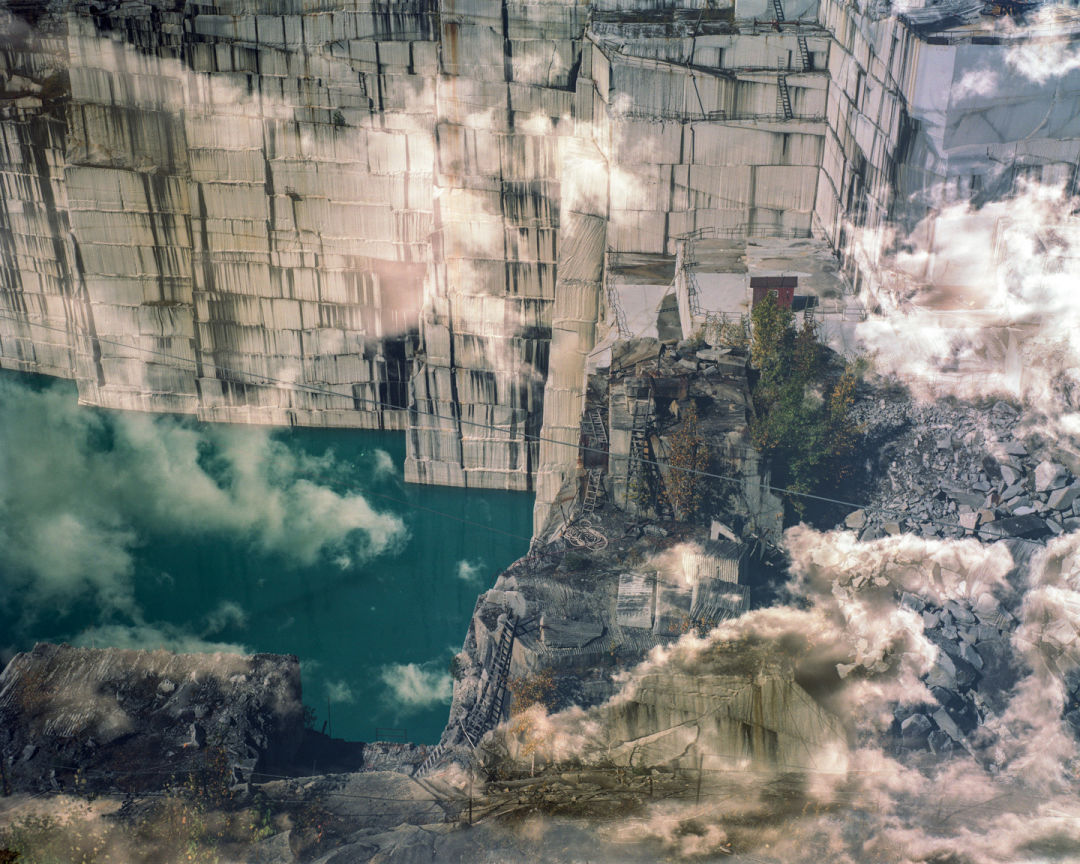
"A Series of Ladders to the Sky (Vermont)"
Image: Courtesy Mike Vos
Someday This Will All Be Gone
8:30 a.m.–5 p.m. Mon–Fri, Feb 7–Mar 27, Pushdot Studio, 2505 SE 11th Ave Ste. 104, FREE
Opening reception Friday, Feb 7, 6–8 p.m. Artist talk March 1, 2 p.m.


